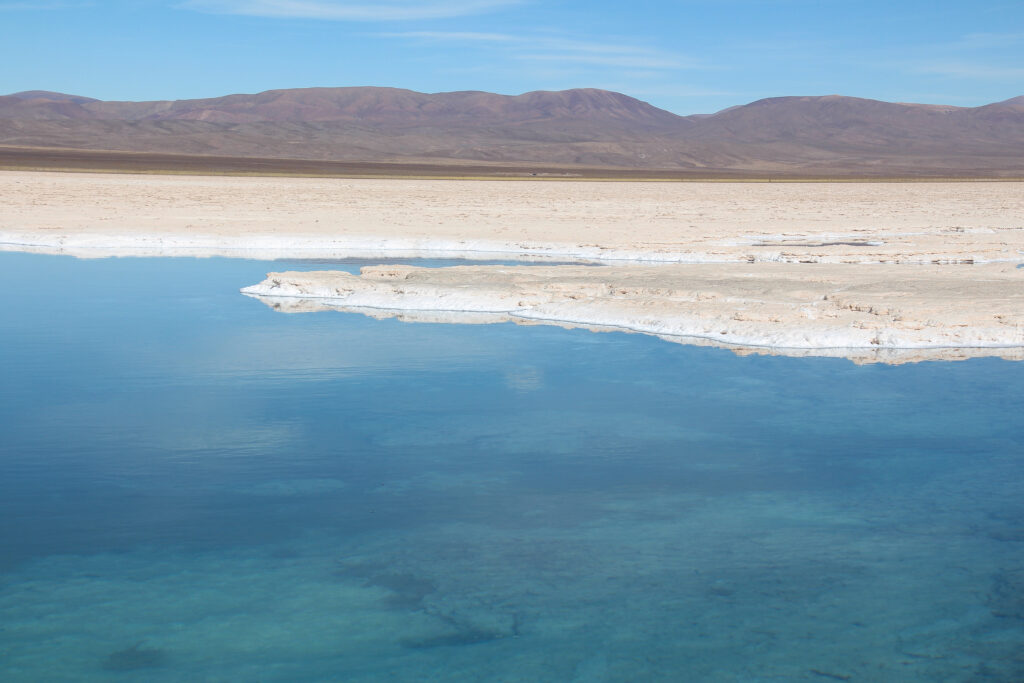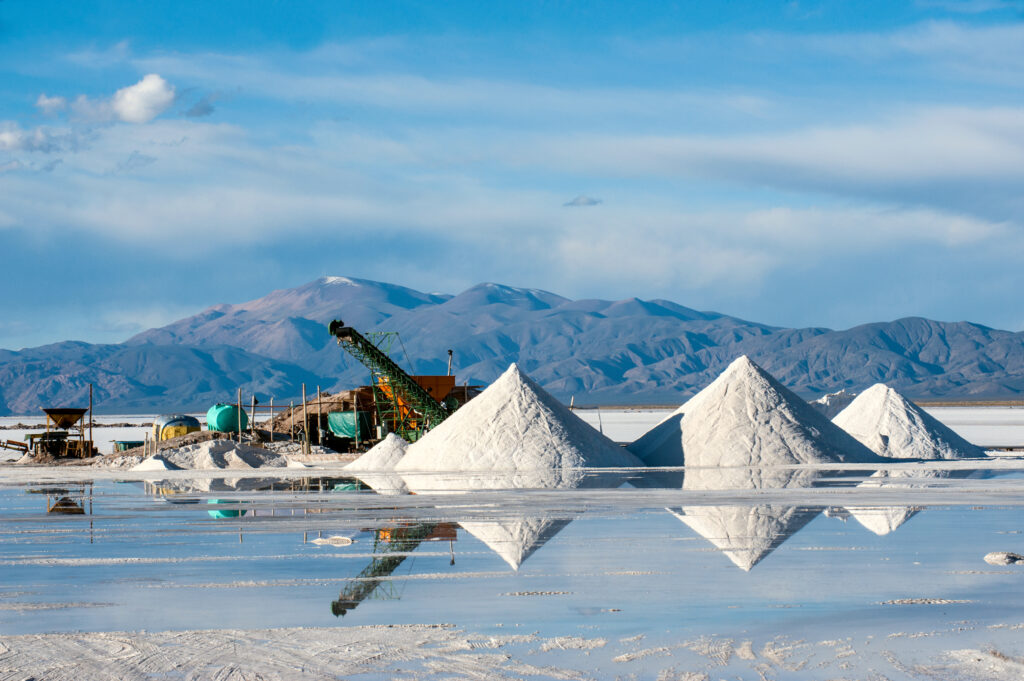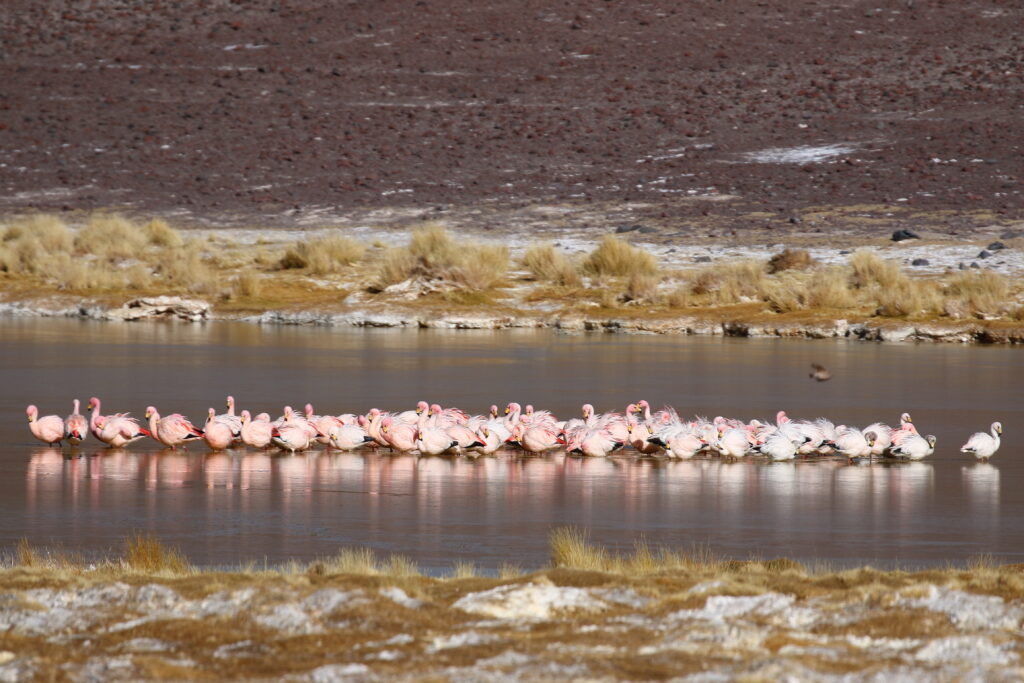
Argentine Andes: Nature and communities pay the price of electric car boom
-
Biodiversity
Ten million years ago, the Salinas Grandes salt flat was created in northern Argentina. A short distance to the north is Alfarcito – a village of 85 inhabitants and home to one of 33 indigenous communities who have spent centuries living in the Salinas Grandes and Guayatayoc basin. Alfarcito’s economy is linked to ecotourism: the local people typically take great pride in showing off their culture and their traditions, making textiles to sell to visitors and even accommodating them in their homes.

But for the past decade, this basin – rich in lithium reserves – has been the target of an industry which risks threatening the way of life of this peaceful village. “What they’re doing is extractivism,” says Iber Sarapura, 25, a youth leader who’s been campaigning against the arrival of mining companies looking to launch lithium mining projects without due consideration of the environmental and social impacts.
“They get the lithium out and with it, they take our drinking water, they pollute the earth, and the air, and force us to move away and lose our culture. Many communities in Chile and Bolivia have already suffered this and the only reason they haven’t succeeded here is because we said NO.”
However, it’s hard to oppose the might of so-called “mega”, or open-pit, mining companies, when local authorities have rolled back regulations to make it easier for them to gain access without following adequate consultation or environmental assessment processes. It’s certainly a very unequal fight – David and Goliath springs to mind. Local media reports maintain that the pressure is so strong from the local authorities and the companies that when the communities protest, or express doubts, they are violently repressed.

And with lithium forming an essential component of mobile phones and electric car batteries, demand for the metal is set to grow more than fortyfold by 2040. Around two-thirds of global lithium reserves are located in what is known as the lithium triangle, which spans parts of Argentina, Bolivia and Chile at more than 3,000 metres above sea level. For years, indigenous communities like Iber’s have joined forces to put a stop to mining operations.
Water is a huge reason why, as lithium mining involves the extraction and evaporation of thousands of litres. For communities which prior to the projects’ arrival had enough water supply to manage only until October, the results can be catastrophic. Lithium extraction and mining infrastructure such as evaporation ponds also physically alter landscapes, destroying critical habitats for wildlife, irreversibly modifying surface and underground hydrodynamics, permanently lowering water tables and altering wetlands. Lithium extraction in the form of brine mining often leads to the depletion of aquifers and salinisation of the freshwater sources that wetlands rely on.
“Salt flats are fragile oases in this arid region, and the main source of water for wildlife and communities,” says Román Baigún, a biologist and Manager of Wetlands International’s Saving High Andean Wetlands for People and Nature programme.

The greenhouse gas emissions generated by the disturbance and degradation of these ecosystems makes Andean countries more vulnerable to the adverse effects of climate change. A 2022 study in Chile found that flamingos, which feed on microorganisms within the brine, have seen their populations reduced by up to 12% due to lithium mining.
Wetlands International works with local communities, governments and other NGOs, to improve environmental practices and to promote more responsible mining. “As part of the ‘Saving High Andean Wetlands’ programme, we work with communities across the Andean highlands raising awareness of the value that wetlands bring to their lives and empowering them to exercise their rights on behalf of themselves and the environment”, Baigún explains.
The programme works to limit the impact on wetlands by improving the understanding and consideration of ecosystem functions such as carbon sequestration and storage, water flow, habitats and biodiversity and their values, and by ensuring this is better reflected in planning decisions, including mine development and closure.
Wetlands International is not against the use of lithium and does recognise that it’s a key mineral for the energy transition, but evaporation-based lithium brine mining methods are neither renewable nor sustainable. We also firmly believe lithium mining should not take place in protected areas or sites that have been recognised for their international conservation value, such as Ramsar Sites and Biosphere Reserves, nor other high value wetlands in terms of climate, biodiversity and social wellbeing.
That’s why we call on:
- Countries spearheading the energy transition and demanding or sourcing lithium to:
- Transparently disclose how and where lithium is exploited for electric vehicle batteries and other products
- Support more research into new technologies that consume less water and have a lower environmental impact
- Promote operations and supply chains free of wetland degradation and ecosystem conversion
- National and subnational authorities in the Andean countries to implement land-use regulations and policies that guarantee the conservation of the High Andean wetlands in the lithium triangle region
- International financial institutions and development banks to play a stronger role in addressing the threats to the High Andean wetlands from lithium mining to meet climate and biodiversity goals
- The private sector and business and finance organisations to give greater consideration to lithium mining and its impacts on people and nature
Baigún says: “There’s no such thing as sustainable mining, but if we work together we can make lithium more responsible, advancing the energy transition without making wetlands and biodiversity and the communities who’ve lived off them for centuries pay the price.
